(405 products available)












































































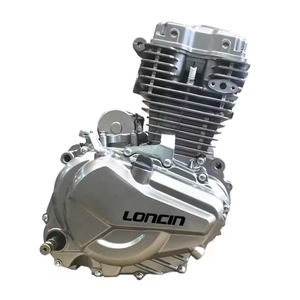
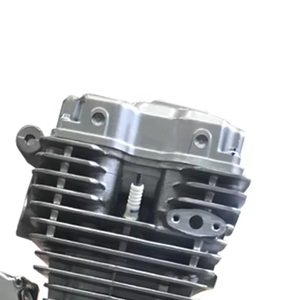
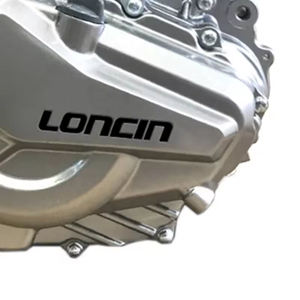
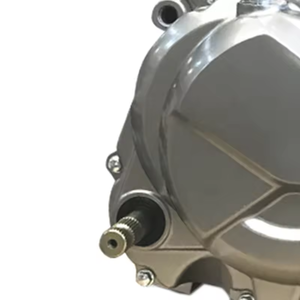
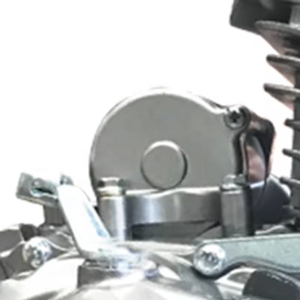
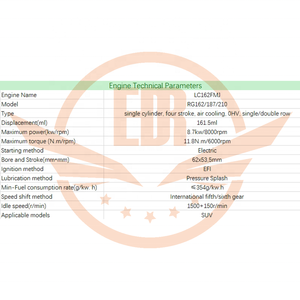























































































As the name suggests, a bike engine 1000cc has a capacity of 1 liter. These engines are revered for their power, and they are mostly found in sports or performance-oriented bikes. Because of the power and speed associated with 1000cc engines, they are mostly preferred by experienced riders. In recent years, 1000cc engines have become very popular, and this is evident in the sales figures as well as the number of bikes on the roads. The increasing popularity of the 1000cc engine is attributed to the growing demand for high-performance bikes.
The 1000cc bike engine can be further divided into different types based on the configuration:
V-twin 1000cc bike engine
V-twin engines have two rows of cylinders that are arranged in a V formation. They have a very powerful torque that makes them ideal for heavy and high-speed touring bikes. V-twin engines are known for their distinctive sounds and great low-speed performance.
Parallel twin 1000cc bike engine
Parallel twin engines have two rows of cylinders arranged side by side. They are very smooth and have a high rpm. Parallel twin engines are very common in entry-level and affordable bikes. They are great for beginners who are looking for a bike with a 1000cc engine.
Inline four 1000cc bike engine
inline four engines have three rows of four cylinders arranged side by side. They are very powerful and smooth, and they have a high top speed, making them ideal for sports bikes. Inline four 1000cc bike engines are known for their high-performance levels and are commonly used in racing.
Boxer 1000cc bike engine
Boxer engines have two rows of cylinders arranged opposite to each other. They are very stable and have a low center of gravity. Boxer engines are used in some adventure bikes, making them suitable for off-road and long-distance touring.
Engine type
The engine type of the 1000cc bike is usually four-stroke or two-stroke. In a four-stroke engine, the intake, compression, power, and exhaust strokes occur in separate cycles. On the other hand, in a two-stroke engine, the compression and ignition strokes occur in a single cycle.
Number of cylinders
The number of cylinders in a 1000cc bike engine ranges from 2 to 6 or more. The cylinders are responsible for combustion and power generation.
Cooling system
The 1000cc bike engines have air or liquid cooling systems. The cooling system regulates the temperature of the engine, thereby preventing overheating.
Fuel system
1000cc bike engines have fuel injection systems that ensure proper air and fuel mixtures for combustion. The fuel system is responsible for delivering fuel to the engine.
Ignition system
The 1000cc bike engine uses an electronic ignition system. The electronic ignition system controls the timing of the spark plugs, ensuring efficient combustion of the fuel-air mixture in the engine.
Torque
Torque is the twisting force generated by the engine and is measured in pound-feet (lb-ft) or newton-meters (Nm). For a 1000cc bike engine, torque typically ranges from 70-100 lb-ft (95-135 Nm).
Power output
Power output is the total power produced by the engine and is measured in horsepower (hp) or kilowatts (kW). A 1000cc bike engine can produce between 100-200 hp (75-150 kW) of power.
Maintaining a 1000cc motorcycle engine is important to keep it running smoothly and efficiently. Here are some tips for maintaining a 1000cc bike engine:
Usage
Consider what the 1000cc motorcycle will be used for. Longer trips require more comfort and luggage options, while city riding needs something nimble.
Ergonomics
Sit on the bikes and take test rides to check the handlebars, seat, and footpeg positions. Ensure everything feels good to avoid fatigue on rides.
Features
Decide what extras are needed, such as ABS brakes, traction control, or riding modes. These can add safety or comfort but may also affect the budget.
Style
Look at the different styles like sports, cruisers, or adventure bikes. Each has a look and feel that suits some buyers better than others.
Safety
Check the safety ratings and features of potential bikes. Things like crash test results and visibility are important. Also, consider how easy it is to perform maintenance tasks like chain lubrication or oil changes.
Cost
Determine the budget for the bike itself and ongoing expenses like insurance, fuel, and servicing. Some have lower running costs than others.
Dealership
Look for a nearby with a good reputation for sales and service. A will provide support, spare parts, and repairs, making ownership more pleasant.
The following tools and steps will be needed to replace a 1000cc bike engine:
Tools
Wrenches, sockets, and ratchets: Used for loosening and tightening bolts during engine removal and installation. Torque wrench: Ensures bolts are tightened to the right specifications. Screwdrivers: For prying and removing screws. Pliers: Used for gripping and removing small parts or fasteners. Allen keys: Used for loosening and tightening hexagonal bolts. Hose clamps: Used for removing and reattaching hoses during engine work. Engine hoist or stand: Used for lifting and supporting the engine during removal and installation. Safety equipment: Such as gloves and goggles, used for protection during engine work.
Steps
Prepare the bike
Disconnect the battery: Ensures no electrical power is going to the engine during work. Drain the fluids: Removes oil and coolant from the engine to prevent spills during removal. Remove any accessories: This includes items such as air filters, exhaust systems, and electrical components that may obstruct engine removal.
Remove the old engine
Use the engine hoist or stand to lift and support the engine. Disconnect all remaining hoses, wires, and other connections to the engine. Loosen the bolts holding the engine to the bike's frame and carefully lift the engine out of the bike.
Install the new engine
Place the new engine onto the bike's frame and ensure it is properly aligned. Tighten the bolts connecting the engine to the frame, ensuring even pressure. Reconnect all hoses, wires, and other connections to the engine.
Final steps
Refill the engine with oil and coolant. Start the engine and let it run for a few minutes, checking for leaks and proper operation. Reinstall any removed accessories and reconnect the battery.
Q: Can a 1000cc engine be put on any bike?
A: No, a 1000cc engine cannot be put on any bike. There are legal and technical constraints to consider. Legally, some regions have laws that restrict the size of engines in vehicles, including motorcycles, to enhance safety. Bikes are designed with specific engine sizes in mind, and fitting a larger engine can exceed the bike's structural and design limits.
Q: How fast can a 1000cc bike go?
A: Generally, a 1000cc bike can reach a maximum speed of 200 to 300 kilometers per hour. Factors such as aerodynamics, bike weight, and tire specifications can affect the speed.
Q: What is the difference between a 1000cc bike and a 600cc bike?
A 1000cc bike engine is larger and more powerful than a 600cc bike engine. This translates to significant differences in speed and performance. Typically, 600cc bikes have an average top speed of 180km/h, while 1000cc bikes can reach speeds of over 200km/h.